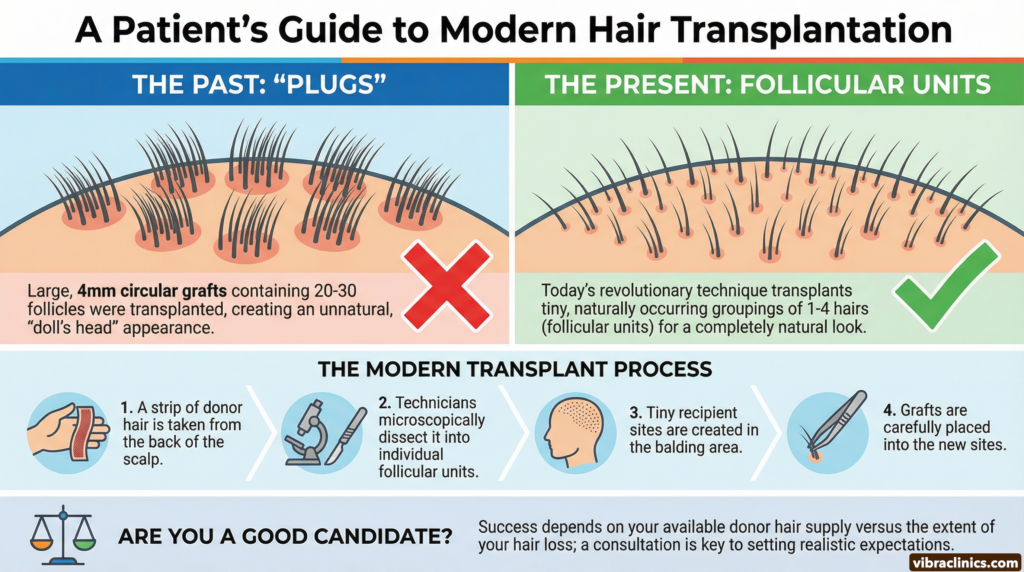Hair fall is a common issue faced by both men and women. There could be various reasons behind hair fall such as stress, hormonal changes, nutritional deficiencies, genetics, and certain medical conditions. It is important to identify the root cause of the problem to determine the best course of treatment. If you are experiencing a hair fall, it is recommended to consult a dermatologist or trichologist who can diagnose the underlying cause and suggest appropriate treatment options.
Most of us experience some sort of hair fall at least once in our lifetime. So here are some important facts about hair loss and its management. Our hair follicles undergo various stages in their life cycle – Hair Growth Cycle. Due to this cycle few hairs are lost every day from our scalp and body and this is considered normal. Small numbers of hairs are lost from the scalp (50 – 100 hairs) in a day is normal in a person with normal hair density on the scalp.
Hair Loss / Hair Fall in Men
Male pattern hair loss is a genetic condition that usually begins after puberty, around 30-40 years of age. It causes hair thinning, receding hairline, and baldness in the crown area. It is more common in men as they get older and can be mentally and physically challenging if it happens at a young age.
Male pattern baldness typically affects the hair on the top of the scalp, causing thinning hair and hair loss. Fortunately, there are medications and surgical restoration options available, including PRP therapy which has shown promising results in reducing hair loss and dealing with baldness.
Causes of Hair Fall in Men
Androgenetic Alopecia, or “male-pattern baldness,” is the most common form of hair loss in men. It occurs at the temples and top of the head due to an increased level of the male hormone Androgen, specifically Dihydrotestosterone (DHT). Androgens are necessary for normal male sexual development and hair growth, but when their levels are high, the cycle of hair growth becomes shorter, causing a delay in the growth of new hair to replace the ones that have shed.

Classification of Male Pattern Baldness

The classification system for male pattern baldness, known as the Norwood scale, categorizes different stages of hair loss.
- Class I indicates an adolescent or juvenile hairline, typically resting on the upper brow crease.
- Class II hairline is the mature hairline that sits above the upper brow crease with temporal recession, and it does not indicate balding.
- In Class III, males experience hair loss in the temporal region, while in Class III Vertex, hair loss occurs in the crown.
- When Class III progresses, hair loss enters Class IV hair loss, both frontal and vertex regions are affected with a solid band of hair separating the two.
- In Class V, bald areas in the front and crown get larger and the hair bridge between the two areas breaks down.
- Next is Class VI, in which hair loss causes a bald area on the front and top of the scalp, while hair on the sides remains relatively high.
- Finally, Class VII patients experience extensive hair loss, with only a wreath of hair remaining in the back and sides of the scalp
Hair Loss in Women

Female pattern hair loss is a hereditary condition that causes thinning of hair on the top area of the scalp where females usually part their hair. This leads to a reduction in the density of hair in that area, resulting in a wider-looking parting or maang. However, it rarely involves hairline receding in females experiencing this type of hair loss.
Hair loss is not just a male issue, women also experience it. Stress, pregnancy, menopause, and medication can cause hair loss in women. However, hair growth usually resumes after these events.
Classification of Female Pattern Baldness
Ludwig Classification helps delineate genetic hair loss patterns in women. Hair loss typically manifests on the front and top of the scalp, while the frontal hairline is usually preserved. Stable hair on the back and sides of the scalp is a must for women to be considered suitable candidates for hair transplant surgery.
The Ludwig Classification helps identify hair loss patterns in women. To be eligible for hair transplant surgery, women must have stable hair on the back and sides of the scalp, regardless of the extent of hair loss.

Alopecia Areata
This type of hair loss pattern affects both men & women. It appears as a circular or oval-shaped patch of complete hair loss. As this hair loss is usually sudden and is due to an Autoimmune process, the condition is reversible with treatment in the initial stages. But in advanced stages, all hairs on the body like eyebrows, chest, etc. are affected.

Treatment & Therapies
Hair Loss FAQs
Your Guide to a Successful Hair Transplant Journey in Udaipur in 2026
Introduction Before we share a quick Guide to a Successful Hair Transplant…
Post-PRP Hair Therapy Care Guide: Expert Aftercare Instructions from Vibra Clinics
Exosomes vs. PRP: Which is Better for Skin Rejuvenation?
Both Exosomes and Platelet-Rich Plasma (PRP) are advanced regenerative treatments for skin…
Experience the Difference: Why a Medical-Grade HydraFacial is Worth It
HydraFacials have become a popular skincare treatment, promising to cleanse, exfoliate, extract…




